Talent Management Assignment: Report On Learning & Talent Development
Question
Task:
The current talent management assignment consists of two parts:
Part One: Individual Essay
Learning and Talent Development in practice is very much focused on two specific strategies: knowledge management and talent management. It is therefore important that practitioners are aware of the theory and critical issues surrounding these types of strategies. Choose either knowledge management OR talent management and
discuss its conceptual and theoretical foundations, and
the critical issues that practitioners should be aware of when implementing this type of strategy. You should draw upon relevant, up-to-date research, theory, and evidence to inform your answer.
Part Two: Individual Report
You are a Learning and Talent Development Consultant and your brief is to design a learning intervention based on a case brief provided or an organisation of your choice following the systematic training cycle. All elements of the systematic training cycle need to be considered. You need to pay close attention to any barriers that might impact this learning intervention and offer possible solutions to these. The report you provide is a “pitch” to the organisation’s senior management team.
Case BRIEF:
Your L&TD team are part of a medium-sized technology company which has four offices – one in London, one in Paris, one in New York, and one in Dubai. Your team is based in London. It was set up five years ago and is establishing itself within each of its main hubs, with the London and New York hubs being very successful. However, over the last year the company’s major competitor has become more aggressive in the Middle East market. Given that Dubai is a growing area of business for your company, it is of paramount importance to ensure that the team in Dubai are in a strong place to grow the business within the increasingly competitive environment. You are very much aware that you need to implement an L&D intervention that strengthens the company’s ability to compete within the Middle East market. You have been told that you have to focus on utilising and developing the existing workforce and in enabling the sharing of expertise and knowledge from the more successful hubs. You also have been allocated some budget to cover the costs to recruit one additional external senior level person to supplement the core intervention if necessary. A decision needs to be made whether it would be preferable for this person to be sourced from the UK or Middle East. You therefore need to design an L&TD intervention that develops and utilises the current talent that the organisation has across its four hubs as well as attracts talent to strengthen the position of the Dubai hub.
Answer
TALENT MANAGEMENT ASSIGNMENT TASK 1: ESSAY
1.0 Introduction
Knowledge Management determines the procedure related to organisation, creation, utilisation, as well as sharing of knowledge within the arena of a specific organisation. At the same time, it focuses on maintaining information in places that are less difficult to access. The primary goal of the implementation of Knowledge Management is the enhancement of efficiency, an increase of productivity, the expertise of the employees, and empowerment of the employees for enhancing their ability related to decision-making. Thus, it emphasises the maximisation of efficiency in the organisation. The present essay highlights the fundamental features of Knowledge Management and explores the theoretical and conceptual framework regarding the same.
2.0 Discussion
Dalkir (2017) opined that Knowledge Management regulates solutions that streamline the stratagems concerning capturing, distributing and effective using of knowledge.The capability of the organisations related to access, as well as sharing business knowledge, assist the same to become highly effective regarding productivity and cost management. The fundamental features associated with Knowledge Management could be the utilisation of both explicit and tacit knowledge, as well as a ceaseless and systematic procedure.Gascoigneand Thornton (2014) pointed out thattacit knowledge signifies the implicit knowledge on which the individuals depend for learning purposes. It determines the intuitive knowledge that is rooted in human experience, context, and values. Deeply embedded in the human mind, it acts as the best source of innovation. Ellisand Roever (2018) commented that explicit knowledge would be less difficult for articulation, codification, and storing. While tacit knowledge is context-sensitive, internalised, cognitive, and subjective, precise knowledge is context-independent, externalised, rational, and objective.

Figure 1: Tacit Knowledge
(Source: Gascoigne and Thornton, 2014)
The theoretical framework of Knowledge Management incorporates organisational memory that plays a pivotal role in corporate learning, as well as decision-making. Hall et al. (2003) noted that many scholars had suggested the assimilation of Churchman's inquirers with Huber's assumptions for existence, elaborateness, thoroughness and breadth. The systems related to organisational memory were successfully associated with DeLone and McLean’s model of Knowledge Management. At the same time, the theory of social construction could also be used as a significant aspect of organisational learning. Hall et al. (2003) pointed out the four capabilities related to Knowledge Management that are storing and retrieval of explicit knowledge, provision of confidence in organisational memory through accuracy verification, currency maintaining, and growth; ability related to the discovery of necessary information, and encouragement of interactivity amongst the members of the organisation. The main components of Knowledge Management could be an assessment of space and time, accuracy regarding system basis, requirements of new action, and many others.
The conceptual framework of Knowledge Management focuses on the understanding and reflection related to the organisation of a business and the accomplishment of competitive advantage for the same. It includes the ISDT (Information System Design Theory) that addresses the loopholes of the entire system. As per Vinekar (2018), the information system encompasses the representation of multiple instances of the same kind. At the same time, the implementation of a sceptical perspective regarding the statements, as well as providing ample reasons, is an absolute necessity. On the other hand, communication is one of the significant features of the evolution and dissemination of knowledge. Sometimes barriers concerning language act as friction concerning the entire procedure of Knowledge Management that requires mitigation. Finally, the common interpretation of the incident instead of an individual judgment is necessary.
Vinekar (2018) noted that a proper emphasis on the conceptual level for Knowledge Management is highly significant such as corporate strategy, business procedure, and many others. At the same time, the reuse of the existing knowledge the convenient adaptation of individual requirements is mandatory. Furthermore, the intuitive understanding of the complex context of the Knowledge Management System is indispensable for thoroughly providing knowledge. The graphical representation of the knowledge would be an excellent means related to the formalisation of knowledge. The management of complexity could be achieved in the organisations by appointing analysts.Simultaneously, the organisations need to focus on perspective integration to a great extent for fostering communication.
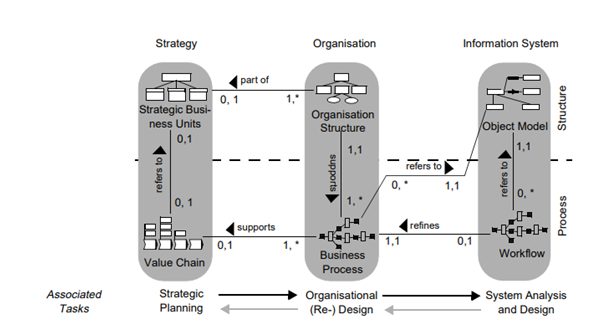
Figure 2: Knowledge Management System and their Relationships
(Source: Vinegar, 2018)
The architecture of the Knowledge Management System incorporates the meta-level layer or the layer related to terminology consisting of the organisational modelling language concerning the description of the organisational structure. It could be based on the value chain concept of Porter and guide the strategic planning. The conceptual level layer incorporates the adequate system of runtime, object management, and many others. The interface level layer of the Information System focuses on the static object model, dynamic, as well as a functional description for the workflow description, and many others.
The four most crucial ingredients of the Knowledge Management Framework are people, procedure, Information Technology or content, as well as strategy. As per Salzano et al. (2016), the term people represents particular roles such as teaching, training, mentoring, and others. The procedure regarding business includes the integration of the system of Knowledge Management, measurement, governance, and change management. On the other hand, content refers to taxonomy, explicit and tacit knowledge, templates, metadata, and other necessary instruments. Strategy denotes the establishment and execution of a framework regarding Knowledge Management. Farooq (2018) noted that the variables such as market orientation, industry type, human capital, and others need consideration in this regard. The critical issues related to the Knowledge Management procedure are knowledge repositories, expert networks, a lack of accountability, a lack of measuring progress, and many others. Furthermore, a lack of business purpose could lead to the failure of the entire system. Simultaneously, the small companies could face problems keeping them updated with the latest technology, Moreover, determining the responsibility of the process and interpretation of valuable data could lead to problems. The challenges faced by many construction companies of the UK regarding Knowledge Management could be illustrated through the following figure:

Figure 3: The Challenges regarding Knowledge Management
(Source: Suresh et al., 2019)
3.0 Conclusion
The above discussion reflects the theoretical as well as the conceptual framework of Knowledge Management. Understanding the knowledge requirements, assessment of the opportunity, designing and implementation of the solutions, continuous improvement, and sustainability are the main steps related to successful Knowledge Management in any organisation. The fundamental purpose of the procedure is sharing ideas, information, perspectives, and experiences. Leveraging the proper framework helps cultivate better habits related to the sharing of knowledge and overcome some of the significant challenges in an organisation.
References
Dalkir, K., 2017. Knowledge management in theory and practice. MIT press.
Ellis, R. and Roever, C., 2018. The measurement of implicit and explicit knowledge. The Language Learning Journal, pp.1-16.
Farooq, R., 2018 Developing a conceptual framework of Knowledge Management. Available at: https://www.researchgate.net/publication/329485286_Developing_a_conceptual_framework_of_knowledge_management [Accessed March 15, 2022].
Gascoigne, N. and Thornton, T., 2014. Tacit knowledge. Routledge.
Hall, D., Paradice, D. and Courtney, J.F., 2003. Building a theoretical foundation for a learning-oriented knowledge management system. Journal of Information Technology Theory and Application (JITTA), 5(2), p.7.
Salzano, K.A., Maurer, C., Wyvratt, J., Stewart, T., Peck, J., Rygiel, B., Petree, T., 2016. A Knowledge Management Framework and Approach for Clinical Development. Sage journals: Your gateway to world-class research journals. Available at: https://journals.sagepub.com/ [Accessed March 15, 2022].
Suresh, S., Jallow, H., Renukappa, S. and Alneyadi, A., 2019, August. Strategies for knowledge management in the UK construction industry: Benefits and challenges. Academic Conferences and Publishing International Limited.
Vinekar, V., 2018. An Information Systems Design Theory for Knowledge-Based Organizational Learning Systems. In Information Systems Design and Intelligent Applications (pp. 484-494). Springer, Singapore.
TASK 2: REPORT
Executive summary
A technology company based in London was set up five years ago. It has four branches across the world, namely London, Paris, New York and Dubai. In three divisions, namely London, Paris, and New York, the medium-sized company has achieved its targeted success. However, the company's main competitor has been more competitive in the Middle East market during the last year. Given that Dubai is a developing area of business for this organisation, ensuring that the team in Dubai is in a solid position to grow the industry in an increasingly competitive climate is critical. As a result, the organisation requires the adoption of a robust Talent Management and training strategy. In terms of sustainable development, corporations place a strong emphasis on human resources. Employees may be regarded as one of a company's most important assets for growth. The company's current employees had already demonstrated their abilities in connection with the company's successful operation in Dubai. As a result, it would be critical to give their abilities a boost. With the authorised funds, the Dubai hub might also engage an additional specialist. This specialist will be hired from the UK. The programme intends to improve the company's position in Dubai by implementing a proper training and personnel management plan while staying within the allocated budget. The primary goal of training would be to maximise the potential of current personnel. This training at this technology company improved employees' adherence to the company's quality requirements. It gave employees the essential abilities to accept innovation and risk, ensuring the company's progress in Dubai.
1.0 Introduction to the organisation and the Need for Talent Management
The organisation related to the present scenario is a Technology Company having four branches across the world. The medium-size organisation, established five years, has witnessed its desired success in three components, namely London, Paris, and New York. However, the growth of a significant competitor in the gulf region has determined the necessity for the implementation of a proper Talent Management and training strategy for the company.
The companies focus fundamentally on the human resources concerning sustainable development.The employees could be regarded as the most vital assets of any firm for procuring the necessary raw materials, product development, marketing and distribution of products and sales. Furthermore, the employees act as the strongest pillar related to customer satisfaction. Scholars noted that the employees of a firm provide indispensable cues about the projection of its image (Bharwani and Butt, 2012). The existing workforce of the company had previously shown their talent regarding its successful venture in Dubai. Otherwise, the company could have been a failure in the region. Hence, it would be crucial to give an edge to their skills and create a provision for sharing their knowledge with the other hubs. Further, an additional expert could be hired by the Dubai hub with the allocated budget.
The SWOT Analysis helped identify the strength, weaknesses, opportunities, and threats of the company.
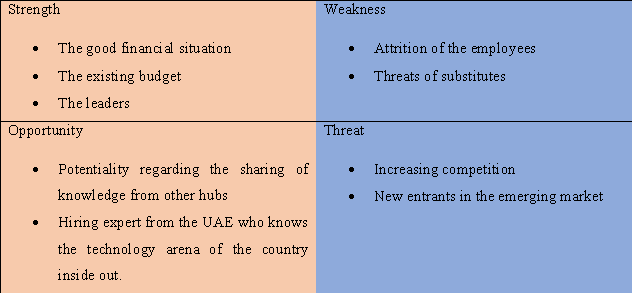
Figure 1: SWOT Analysis
(Source: Created by the learner)
The external analysis of the company was conducted by Porter’s Five Forces:
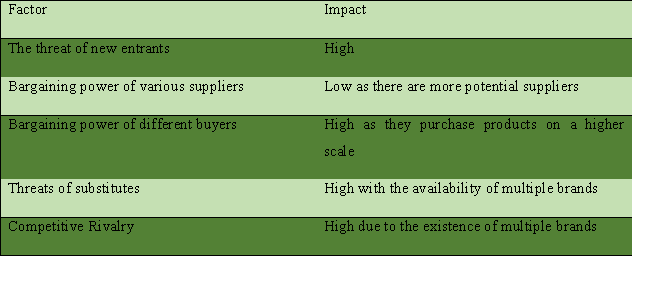
Figure 2: Porter’s Five Forces Analysis
(Source: Created by the learner)
2.0 The Training Strategy
2.1 The aim of the training
The programme aims at strengthening the company's position in Dubai through a proper training and talent management strategy within the provided budget.
2.2 The objectives of the training
The main objectives related to training would be
• To utilise the optimum potential of the current employees.
• To draw the attention of the talented individuals from the global talent pool.
2.3 Stakeholder Analysis
The main stakeholders of the hub and their relative significance could be described here:
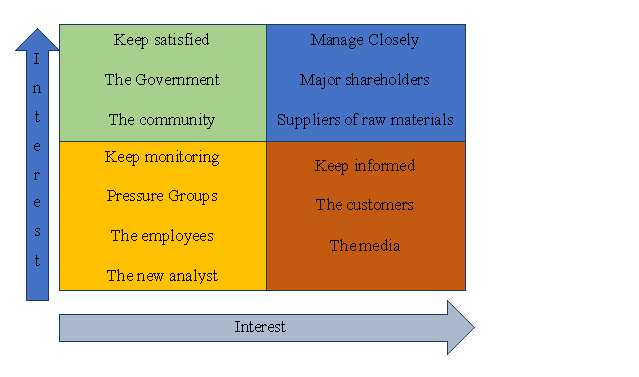
Figure 3: Stakeholder Analysis
(Source: Created by the learner)
The government of both the UK and the UAE have high powers which demand the company to keep them satisfied. The principal shareholders and the suppliers have high interest and high power regarding the success of the business. Hence, the company needs to take utmost care of the same (Mind Tools, 2022). The pressure groups, the new analyst and the employees have low power regarding the decision of the company related to training. However, providing them with adequate information and communicating with them would be mandatory.
2.4 Potential risks and their mitigation
|
Risk |
Likelihood |
Impact |
Rating |
Mitigation |
|
Staff Accountability |
3 |
3 |
3 |
Replacement of staff if required |
|
Knowledge Management |
2 |
2 |
2 |
Focusing more on virtual communication with other hubs and developing intra-departmental and inter-departmental communication skills |
|
Strategic planning |
3 |
3 |
3 |
Keeping another plan’s blue-print ready |
Figure 4: Potential Risks and their Mitigation
(Source: Created by the learner)
3.0 The Training Intervention: Design and Delivery
Talent Managementhas become a rudimentary part of leadership across the globe in recent times (Krishnan and Scullion, 2017). It encompasses the identification ofmultiple vacant positions, sourcing talented and qualified candidates to fill up the same, developing basal skills, providing training, and employee retention.
3.1 Main Strategies to be adopted by the company
Provision ofa detailed job description: It could help the organisation deliver a better job understanding to the new candidates. The rightly structured definition of the job would encompass the job title of the job, the location that is Dubai, the responsibilities concerning the employment, the much-needed skills, instruments, salary, equipment, and different benefits. It would attract other talented and skilled people towards the job.
Person-organisation fit:- It is one of the cardinal features of talent management. Theincapability of the employees to fit into the culture of the company hinders their productivity. The individual values could overlap with the company values leading to the dissatisfaction of the employees, which, in turn, decrease their creativity or productivity. Collaborate-coach-evolve: -The collaborative culture is an elementary need of the company for ensuring strategic advantage.Scholars have pointed out the significance of the evolution of apt manners for motivating the employees through collaborative and coaching conversations (Wuim-Pam, 2014). It would also need the company to prepare its employeesfor fundamental changes and simultaneously create a sense concerning reliance on their colleagues.
Reward:-It would not only focus on the monetary benefits of the employees. At the same time, it would emphasise showing appraisal of an employee or team in front of the others that would help them to feel their worth in the organisational culture. Such positive feedback would make them more engaged with the jobs and help the company earn more satisfaction from the customers.Performance appraisal encompasses factors like expert knowledge, cognitive ability, and performance that is associated with the individual difference perspective of psychology (Dries, 2013).
Opportunities regarding continuous growth: -The literature regarding positive psychology functionalised talent as an identity or a basic tenet of a human being, allowing them to perform at their optimum potential (Dries, 2013). The paramount criterion regarding talent management is the self-actualisation of human beings. The appropriate means for maximisation of an individual's capability, as well as the scope of continued growth, acts as a crucial pillar about their involvement with the job. The application of Maslow’s Theory of Hierarchy would be an excellent means in this regard.
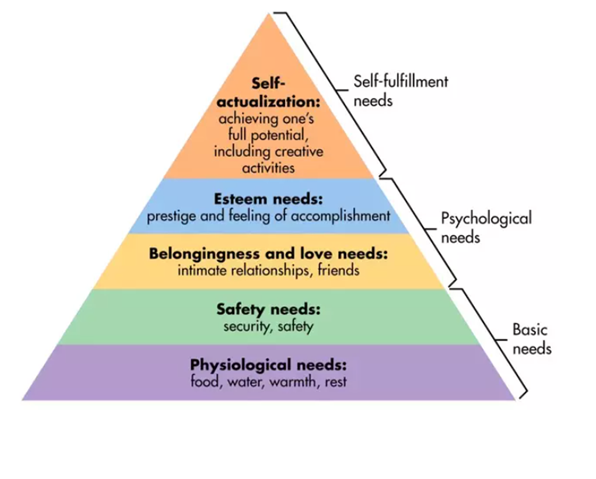
Figure 5: Maslow’s Theory of Hierarchy
(Source: McLeod, 2022)
The adoption of the Systematic Training Cycle would be an excellent means for strengthening the company's position. It is an internally logical and well-structured model regarding a practical guide related to training.
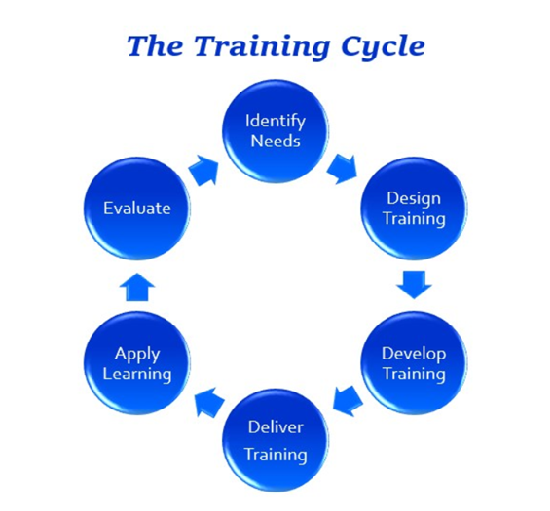
Figure 6: Systematic Training Cycle
(Source: The Peak Performance Centre, 2022)
The evaluation of the training strategy
Employee training and development programs worked on employees’ information and skill, which helpfully affected their work performance. Workers' complex abilities were honed during training, which worked on their spirit and occupation fulfilment. This training had the additional advantage of laying out a system for focusing onemployees' assets and guaranteeing a good outcome and benefits. Workers were tested to make a hazard and stride outside of their usual ranges of familiarity to embrace improvement without mastery, which they were reluctant to do.This training gave them the essential abilities to accept innovation and risk, ensuring the company's progress in Dubai. This training improved employees' adherence to the company's quality requirements. It considers both the existing and new workforce's strengths, functionality, and competencies. Employees benefit from the training since it improves communication and other aspects of the business (Krishnanand Scullion, 2017). The organisation's reputation increased as a result of this training. Employee competence and job satisfaction will now spread the word. In addition, the organisation will hire additional qualified employees. They want to work at a company where they can learn as well as put their skills to good use in order to increase the company's profits. Employee development and training programmes are essential to the global success of firms. These programmes helped organisations raise employee productivity and promote company culture while also allowing employees to expand their skills. Employee training and development programmes enabled the company to further develop its existing staff, allowing it to preserve valuable company experience and tenure in-house, reduce turnover, save money on hiring, and enhance profits. As a result of the training, employees were able to learn new skills, polish old ones, increase productivity, do better their performanceand become better leaders. The training method impacted employees' thinking, resulting in high-quality performance. Nature has no beginning and no end. One of the most fundamental advantages of employee training is that it further develops worker performanceThe Peak Performance Center(n.d).The employee who participates in preparing and advancement find the opportunity to acquire new abilities or enhance existing ones. This will permit them to create inside the organisation, adjust their objectives, and spotlight their endeavours on regions where they accept more work is required. It will ultimately help them in turning out to be more steady in their expert lives, thus expanding the company’sgrowth in Dubai.
Identification of needs: The need for collaboration-coach-evolve to prepare the employees regarding necessary changes and boost their reliance on the colleagues, as well as the proper manner for performance appraisal, is needed for great company culture. At the same time, training regarding the development of a job description programme for the hiring managers would be required.
Designing the training: The necessary steps in this regard would be aligning the L&D objectives with the business goal of the company, assessment of the skill gap, retention of talented colleagues, and attraction of top talent from the concerned arena (Pappas, 2021).
Developing the training: The method of training would be an instructor-led one. It would involve the development of materials such as assessments, PowerPoint presentations, job activities, and role-playing.
Delivering the training: It would involve the delivery of the materials mentioned above to the employees.
Application of the training: The individuals would be given time for applying the same in the live environment. They could work individually or under the guidance of their peer.
Evaluation of the training: In this final stage, the actual impact of the training will be assessed, and the necessary feedback will be given.
4.0 Conclusion
Business executives must constantly be on the lookout for ways to get an advantage in today's competitive climate. Employees are a company's basis and vitality. Employee training and development programmes help the company develop its employees' talents, allowing it to maximise profits. Employee training at this technology company improved employees' adherence to the company's quality requirements. It gave employees the essential abilities to accept innovation and risk, ensuring the company's progress in Dubai.
Reference
Bharwani, S. and Butt, N., 2012. Challenges for the global hospitality industry: an HR perspective. Worldwide hospitality and tourism themes.
Dries, N., 2013. The psychology of talent management: A review and research agenda. Human Resource Management Review, 23(4), pp.272-285.
Krishnan, T.N. and Scullion, H., 2017. Talent management and dynamic view of talent in small and medium enterprises. Human Resource Management Review, 27(3), pp.431-441.
McLeod. S., 2022. [online] Available at:
Pappas, C., 2021. 5 tips to design talent development courses for HR online training. eLearning Industry. Talent management assignmentAvailable at: https://elearningindustry.com/tips-design-talent-development-courses-for-hr-online-training [Accessed March 15, 2022].
The Peak Performance Center, The training cycle. The Peak Performance Center. Available at: https://thepeakperformancecenter.com/business/learning/course-design/developing-a-training-program/the-training-cycle/ [Accessed March 15, 2022].
Wuim-Pam, B., 2014. Employee core competencies for effective talent management. Human Resource Management Research, 4(3), pp.49-55.












